10 Secret Spots in Rome
If you feel like getting off the beaten track in Rome, take note of the Italian capital's best-hidden secrets. Get to know the city like a local!
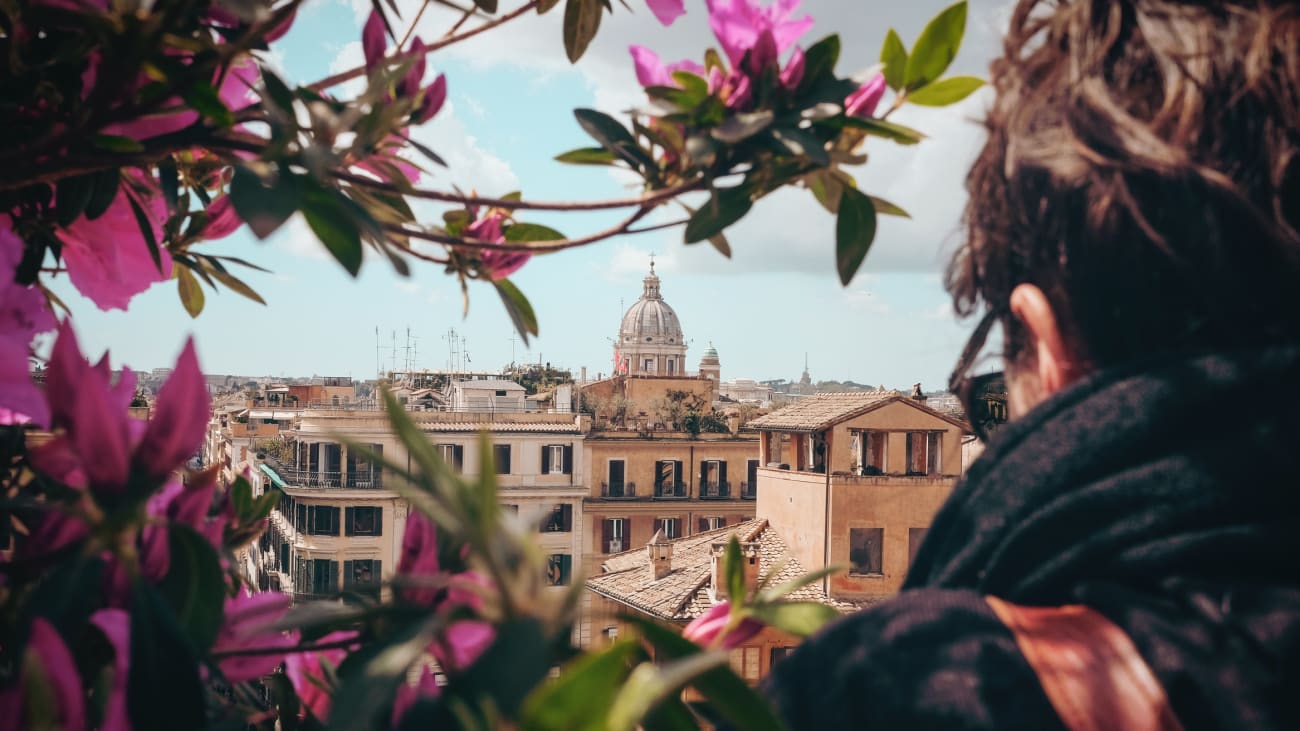
Discovering the hidden corners of Rome | ©Cristina Gottardi
Beyond guided tours of the Colosseum, tickets to the Vatican, Rome's most beautiful squares, impressive fountains and opulent streets, there lies a secret Rome, hidden from the tourist's gaze.
That's why you're reading this: to break away from the crowd and add the lost gems of the Eternal City to your list of things to see and do in Rome.
1. Quartiere Coppedè
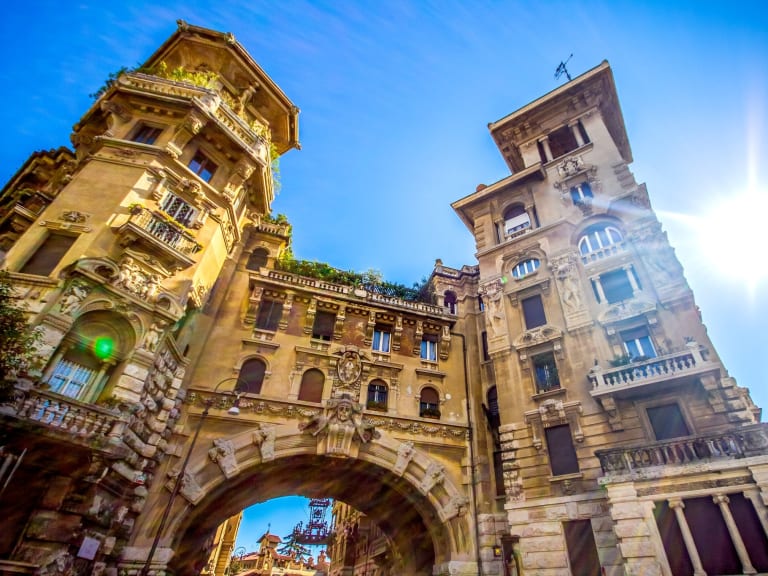
Rome's Coppedè district is like stepping into a fairy tale squeezed between four streets, on the corner of Via Dora and Via Tagliamento. There are a couple of very pretty buildings and a square with a fountain which, although they may seem insignificant, make the visit well worth your while.
One advantage of this area is that, as it is not so well known, it is a refuge from the tourists who crowd the streets of Rome, where you can relax and take some beautiful photos in the evening light. It is one of the things I recommend you do during your visit to Rome and is sure to be one of the stops if you book a private tour of hidden Rome.
2. Piccola Londra
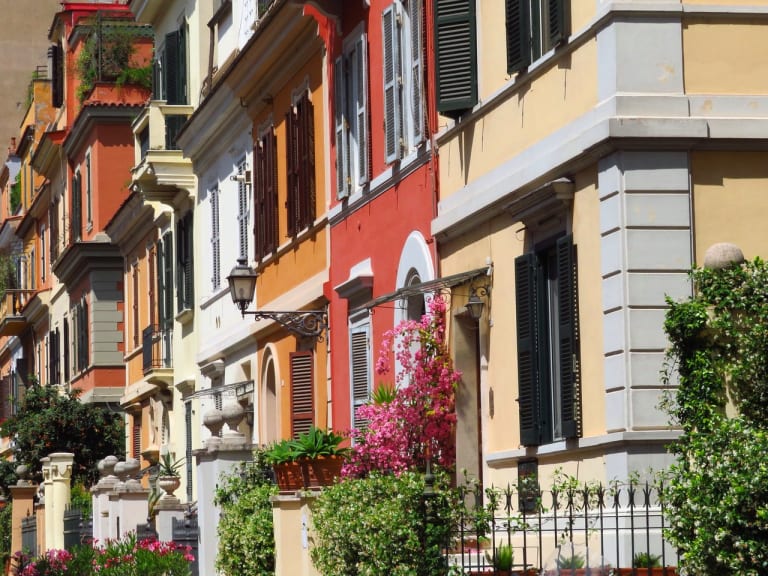
Visit Piccola Londra knowing that you will fall in love with its Notting Hill-style houses, but with the added magic of Rome. The name of this neighbourhood literally means Little London, and it was built in the early 20th century in an attempt to modernise Rome and adapt it to the style of other European cities. The contrast this neighbourhood offers with the rest of the city is a testament to this.
Piccola Londra is only a few streets long, as architect Quadrio Pirani's project was never expanded, but you can stroll through this unusual part of London on Via Bernardo Celentano, just off Via Flaminia.
- Take the opportunity to see it... if you're visiting Rome and taking a tour of the Borghese Gallery and gardens, as it's only a short walk away.
3. The lock of the Knights of Malta
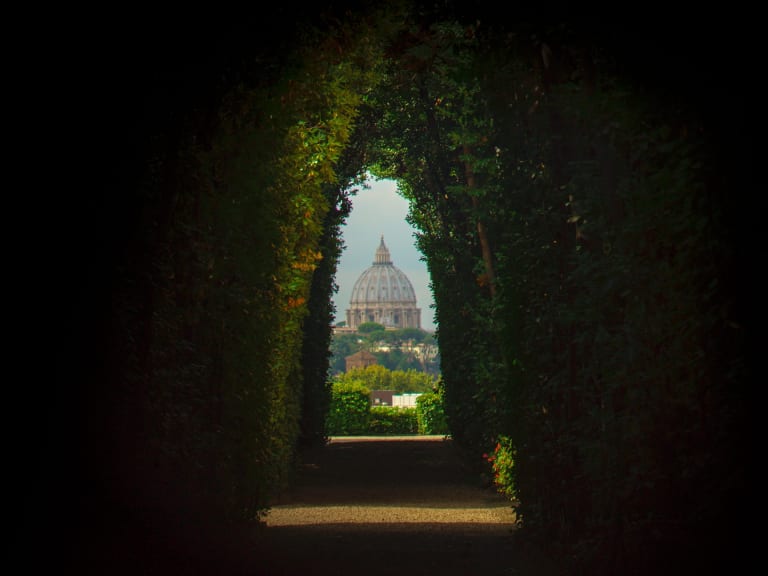
The Aventine Hill is one of the seven hills of Rome, the southernmost of the city. In the days of the Roman Republic, it was home to many of the city's plebeians, but today it is an area of elegant mansions and gardens.
Of all these gardens, there is one that is probably the favourite of many locals in Rome, the Giardino degli Aranci or Orange Garden, which was formerly an orchard belonging to Dominican monks. This park, which is free to enter, contains one of Rome's not-so-well-kept secrets, a lock through which you can see the dome of St. Peter's Basilica in the distance.
Without a doubt, it is an ideal way to photograph this iconic place after your visit to St. Peter's Basilica, so add this visit to your itinerary, as both the views and the walk are a must. The best time to visit the Orange Garden is an hour before sunset, although at this time you will find more tourists.
- Take the opportunity to see it... before or after visiting the Trastevere neighbourhood, as it is just a short distance across the river.
- Opening hours: from 7 a.m. until sunset, i.e. until 6 p.m. from October to February, 8 p.m. from March to September and 9 p.m. from April to August.
4. Basilica di Santo Stefano Rotondo al Celio

The Basilica di Santo Stefano Rotondo al Celio is a place I can't resist mentioning, and it's almost certain to be one of the stops if you book a guided tour of Rome's catacombs and basilicas. It's true that there's no rival for St. Peter's Basilica, but this isn't about finding a basilica that can compete with the Holy See: it's about finding a place that others might mistakenly overlook as not worth visiting.
Due to its proximity to the Colosseum, the Basilica di Santo Stefano Rotondo al Celio is exactly what we're looking for. Its circular architecture, sombre interior decorated with frescoes of martyrdoms and its sepulchral atmosphere create an atmosphere that you will find in few places in Rome.
To get to the Basilica di Santo Stefano Rotondo al Celio, it is best to walk there during your guided tour of the Colosseum. It will take you about 10 to 15 minutes to reach Via di Santo Stefano Rotondo 7.
- Take the opportunity to see it when you visit the Colosseum, as it is quite close by.
- Opening hours: open to the public from 10 a.m. to 1 p.m. and from 2 p.m. to 5 p.m. from October to March, and from 3 p.m. to 6 p.m. from April to September.
5. Palazzo Doria Pamphilij
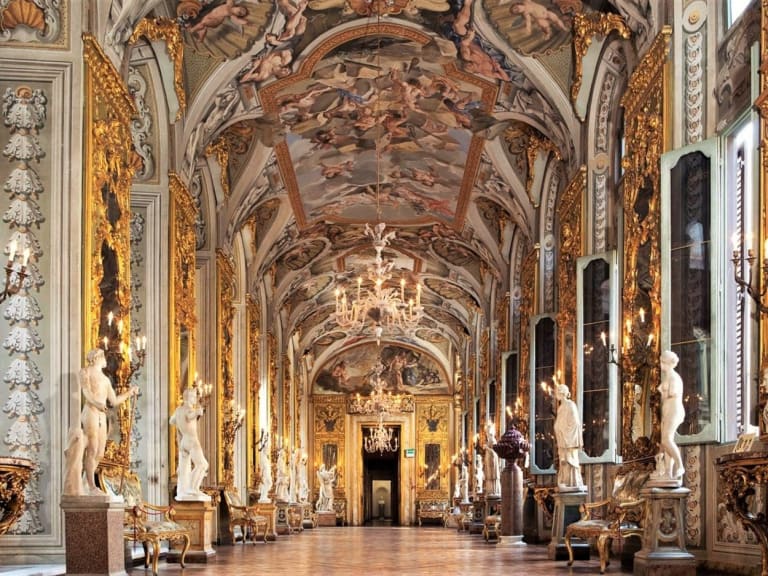
This palace is one of the most overlooked places in Rome, although it can be included if you book a private tour of hidden Rome. It is located in the city centre, near the Trevi Fountain, the Pantheon and the monument to Victor Emmanuel II. The exterior is beautiful, but inside it is a baroque fantasy that houses a museum that you can visit, the Doria Pamphilij Gallery.
The museum's collection belongs to the family that gave the palace its name, with works of art by Raphael, Titian and Velázquez, among other painters, displayed in a gallery decorated with opulence and luxury.
A place to rest from the hustle and bustle of the Roman streets, especially inside the museum where you will find a courtyard with columns where the sun shines in a special way.
- Take the opportunity to see it... when you're in the centre of Rome, whether throwing a coin into the Trevi Fountain or visiting the Pantheon in the evening.
- Opening hours: 9.30am to 7pm on Saturdays, Sundays, Mondays and public holidays, and 11.30am to 11pm on Fridays.
- Price: £14 with audio guide.
6. Aqueduct Park
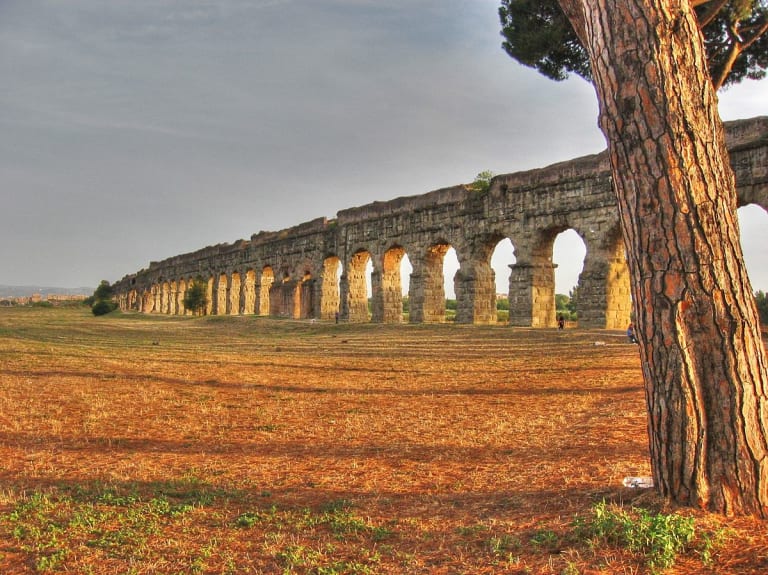
If you've seen Sorrentino's La Grande Bellezza, this park will ring a bell from one of its scenes, and if not, you'll discover for the first time a place with the air of an ancient ruin, a park whose vegetation has grown among the remains of a lost civilisation.
The Aqueduct Park is undoubtedly one of the most interesting places in Rome, especially at sunset, when you can see one of the arches of the Aqua Felix or Aqua Claudia aqueducts, which still stand in this park, framed in the background.
Visiting the park is completely free and you can easily get there from the city centre on metro line A, getting off at Lucio Sestio or Giulio Agricola stations, which are just a few minutes' walk from the Park of the Aqueducts. You can also book an electric bike tour of Rome's Via Appia, the aqueducts and the catacombs.
- Take the opportunity to see it... if you have a free day, because it is quite far from the centre of Rome.
7. Tiber Island
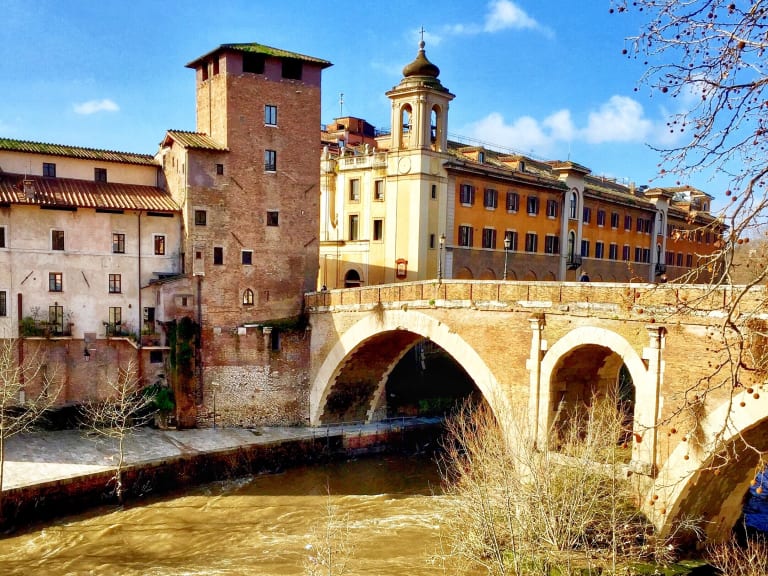
The Tiber River divides Rome's historic centre from the Trastevere neighbourhood. The Ponte Cestio bridge spans the river, connecting it to the small, charming and picturesque Tiber Island, which is like a miniature medieval town with its old bridges and church. It once housed a temple dedicated to Aesculapius, the Greek god of medicine, which was built to celebrate the end of the plague that had ravaged Rome. Today, this temple is one of Rome's most important hospitals.
Strolling around the Tiber Island was one of my favourite pastimes during my last visit to Rome, and I returned one last time before catching my flight back. It is also one of the places you will visit if you book a tour of Trastevere or a tour of Rome's Jewish Quarter.
During the summer, the island hosts the Isola del Cinema film festival. There are also bars, restaurants and food stalls along the riverbanks, giving it a festive and undoubtedly memorable atmosphere.
- Take the opportunity to see it... if you book a cruise on the Tiber with a stop, as you will probably be taken there.
8. Michelangelo's Moses
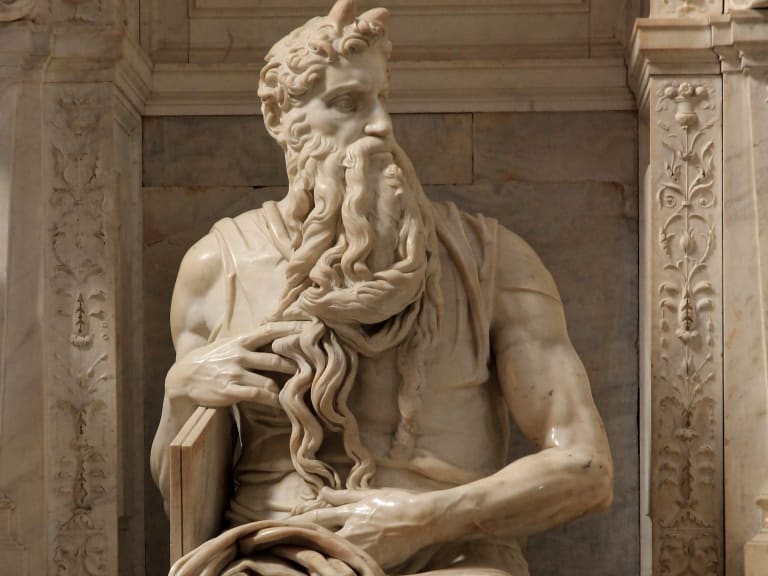
During your visit to Rome, you will gain an in-depth understanding of the art and genius of Michelangelo Buonarroti: the Pietà, the frescoes in the Sistine Chapel, but you will not be able to fully appreciate his art without seeing the Moses with your own eyes.
Located in the Tomb of Pope Julius II in the Basilica of San Pietro in Vincoli (in the square of the same name), it is a sculptural ensemble fraught with disappointment: during the creation of the work, the pope interrupted his donations to Michelangelo and what was to be a colossal work of 40 sculptures was left as a single scene in which the figure of Moses stands out.
A curious feature of his image is that he appears to have been gored, following a tradition that, according to historians, derives from a mistranslation of the Bible, which makes the light falling on Moses' face somewhat disconcerting.
- Take the opportunity to see it... after visiting the Colosseum, as it is only a seven-minute walk away!
Piazzale Giuseppe Garibaldi, on the Gianicolo
9. Piazzale Giuseppe Garibaldi, on the Gianicolo
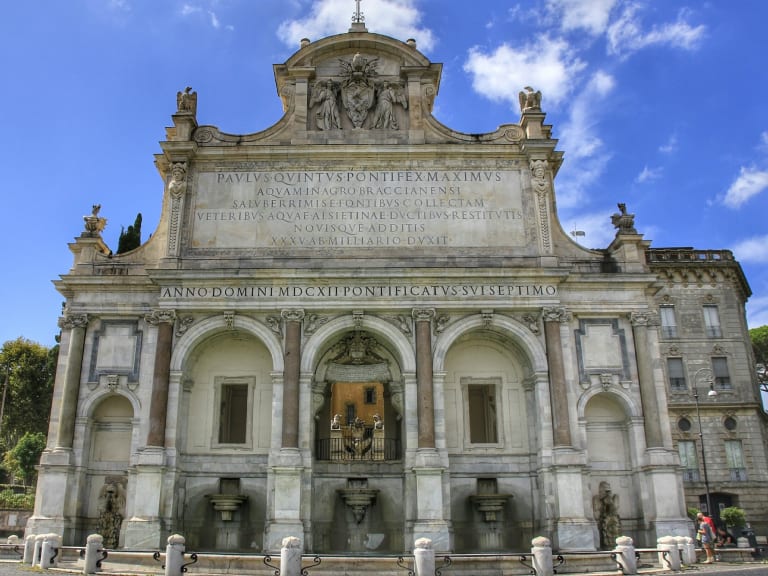
Another location featured in Sorrentino's film, The Great Beauty, Piazzale Giuseppe Garibaldi has a monument to the military and political figure of the same name, and a wonderful 17th-century fountain, the Fontana dell'Acqua Paola.
It is located at the top of the Gianicolo hill, also known as the eighth hill of Rome, and offers beautiful views of the city, especially at sunrise or sunset.
- Take the opportunity to see it... when you feel like contemplating spectacular views of the city from the Gianicolo hill.
10. Borromini's perspective
Perspective of Borromini
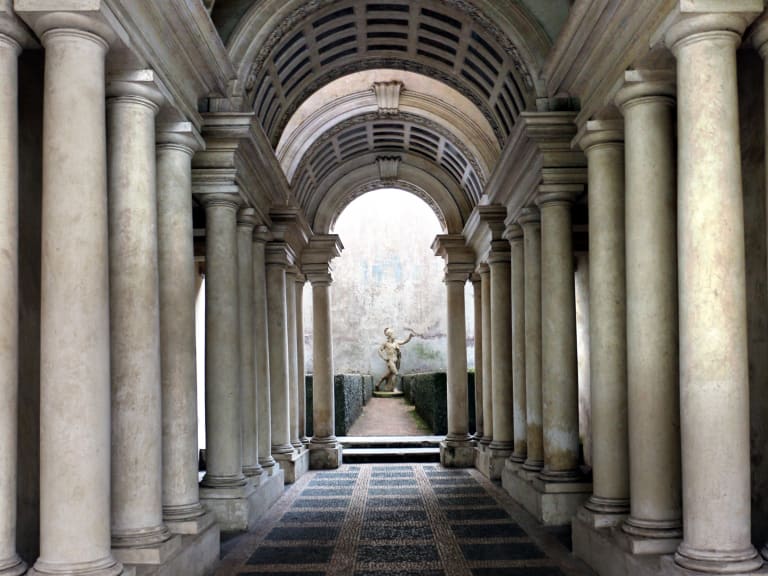
Finally, we arrive at our tenth hidden gem in Rome: Borromini's Perspective, one of the most fascinating places in the whole city. Located in a courtyard filled with orange trees in the Palazzo Spada, it is an optical illusion commissioned by Cardinal Spada. An eight-metre-long gallery with a sculpture dedicated to Mars, the Roman god of war, which actually looks much longer.
This effect, the work of the brilliant mind of architect Giovanni Borromini, was created using a rising floor and a sloping ceiling, with side columns that become smaller and smaller to simulate the effect of distance.
It is a small theatrical spectacle very much in keeping with the Baroque aesthetic and well worth seeing by booking a private tour of hidden Rome or during your visit to Trastevere and the Jewish ghetto.
- Take the opportunity to see it... before crossing the river to visit the famous Basilica of Santa Maria in Trastevere.
- Opening hours: Palazzo Spada is located at Piazza Capo di Ferro, 13, and is open Tuesday to Sunday from 8:30 a.m. to 7:30 p.m.
- Price: Admission is €5.
